Welcome to the Newsletter Series. Ivy and I co-write a periodic newsletter. This piece is adapted from an edition of it, dated when the newsletter came out.
Ivy and I kicked off 2019 with two weeks at Hanna Berry Farm in New Zealand. We coordinated it through Workaway, a site for finding WWOOFing and other such “cultural exchanges”.
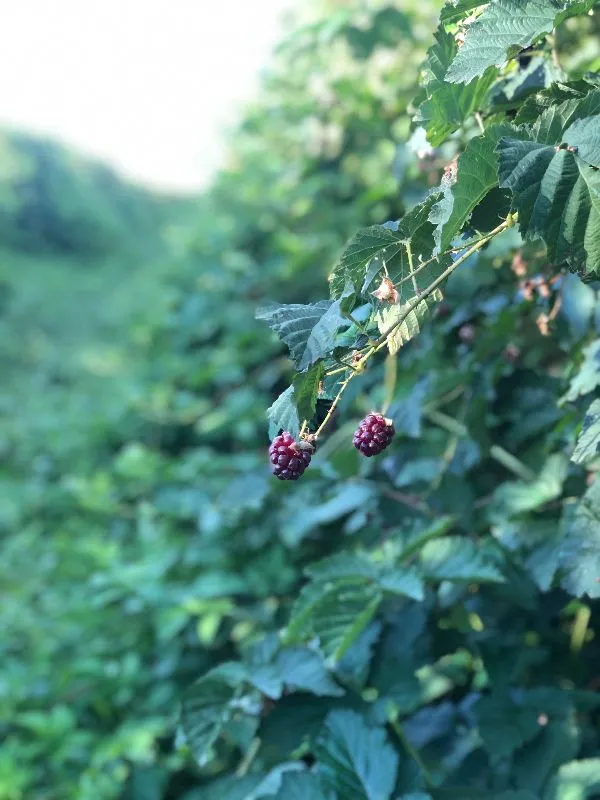
Each day we worked 4 hours/day, 6 days a week in exchange for food and accommodation. Accommodation was a room in the family home. Meals were DIY, with groceries ordered for us based on a wish list. I didn’t like cooking in the outdoor kitchen (heat, flies, animals), so I fulfilled my caloric intake by eating my body weight in bread. We were allowed to eat the bruised fruits at the fruit stall, so Ivy fed herself from there: peaches, apricots, nectarines, plums…all of which I’m allergic to.
The work was chill, and even meditative. Each day usually consisted of 2 hours of farm related work and 2 hours working the farm’s roadside fruit stall. The stall sold their own farm grown boysenberries, other sourced seasonal fruits, and real-fruit ice cream (which was 95% vanilla ice cream and 5% fruit). They hired high school kids to pick in the mornings, so for us, it was miscellaneous need-to-do tasks of the day. Tasks included: washing punnets (containers), drying punnets, sorting berries for freezing, bagging, and working the vines (pruning, caning, picking).
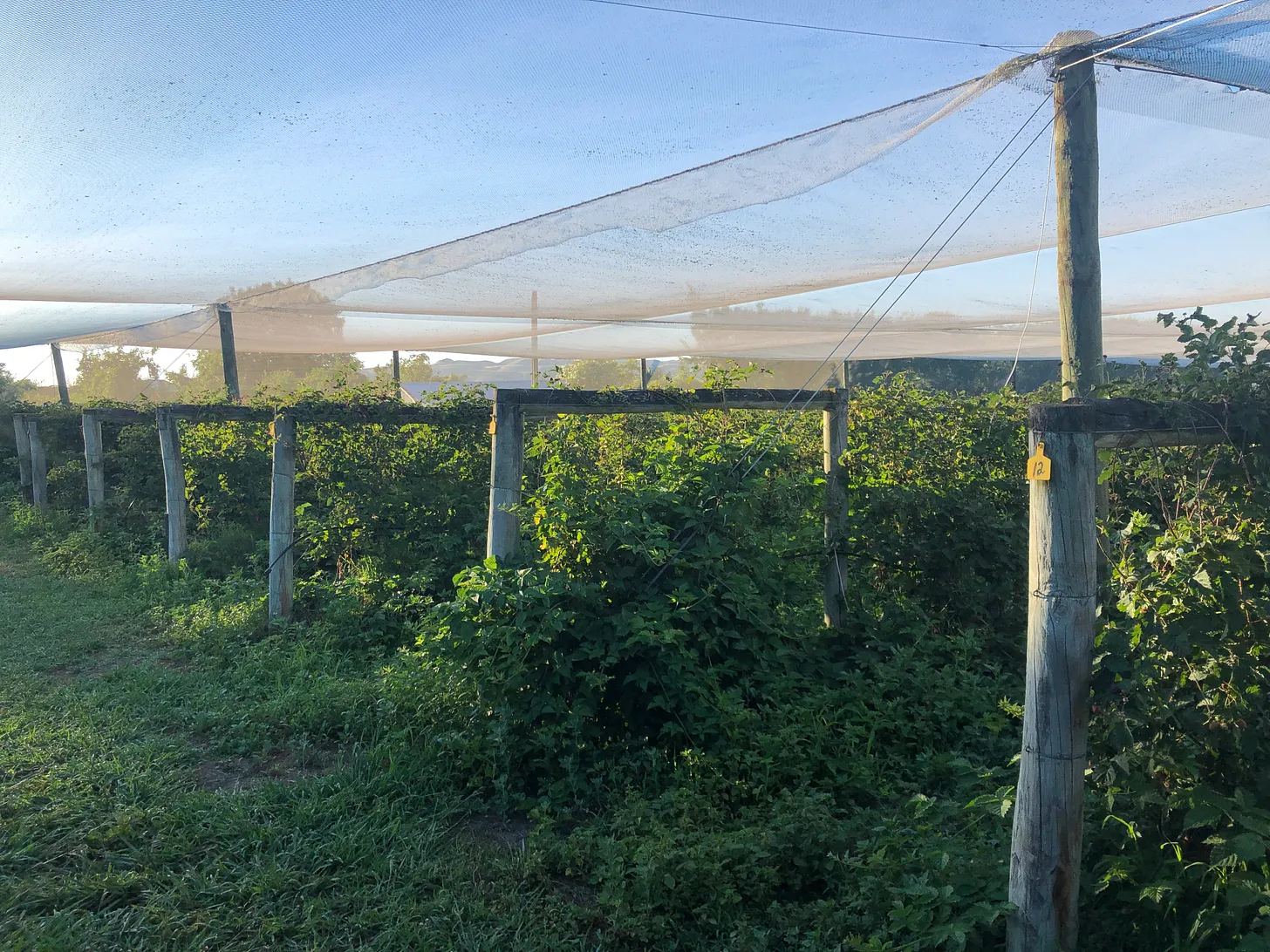
Each day started early and ended before it got hot, and time in the stall later in the day was shaded. We spent mornings working, middays hiding from the heat in our shaded bedroom binging Asian dramas, and cooler afternoons and evenings exploring the area. The definition of simple life. We came away from the experience with three main takeaways.
Lesson 1: Farm Life is Hard (Duh)
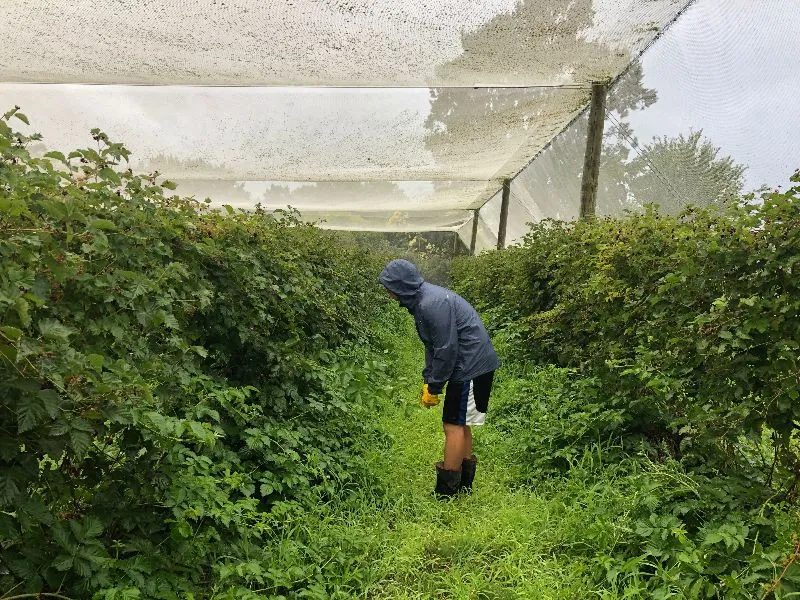
In our short stay at the farm, we encountered a few incidents that helped us understand how much of success is outside of a farmer’s control.
Many farms are seasonal, although some do run other businesses in the off-season (mostly lambing in NZ). For Hanna Berry Farm, boysenberry picking season is only 2-3 months of the year, which means nearly all their income comes from this short period. They spend the rest of their year ensuring the health of the berry vines. This year, right in the early part of the season, it rained heavily for a few days, which it turns out is actually bad for berries (something something too much moisture over-ripens). This shortened the season to just 6 weeks, losing them tens of thousands of revenue. A year of work, ruined by a few days of rain they could not control.
Fresh fruit sales from the roadside stall is their main source of income. Lower quality and excess berries that did not sell day of picking get frozen and sold half priced, good for ice cream and jam. The farm had a recurring customer in Auckland that ran an ice cream chain which they sent regular shipments to. On one of these deliveries, drop off and pick up times were miscommunicated and boxes of frozen berries ended up melting at the pick up spot. The customer refused to pay for the melted berries and this too cost them thousands. Since Auckland is halfway across the island, they couldn’t even verify this did happen or do anything about it.
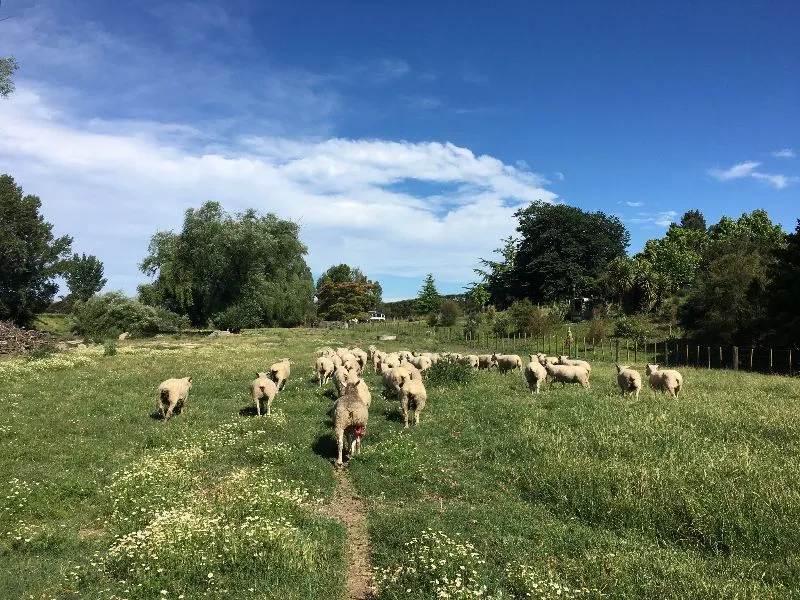
Almost every farm in NZ has some sheep. On our first day on the job, one of the sheep was attacked by a passerby’s dog — her leg was chewed to the bone. It took 4 of us together to herd the sheep back into another pasture. We were hopeful that the sheep would be okay since she was walking fine still but we were told that if by the next morning she was in too much pain or in a bad condition (meaning that she couldn’t be sold or used for breeding) she would be put down. We heard a gunshot at 6am the next morning. Luckily, the owner of the dog paid $250 hush money. If the attack was reported to the local council, the dog would have been put down as well.
These three examples happened during our short stay and we can’t imagine all the unexpected incidents farmers deal with throughout the years. This sure makes us appreciate our (previously) steady salary jobs and the hard work it takes for local small businesses to operate.
Lesson 2: Know your Food
Our goal of volunteering on farms was to learn more about the food ecosystem. Being so close to where our food was grown allowed us to fully immerse ourselves with the values we read about.
In NZ we tried to eat local and can say that we ate 95% NZ made food. We try to go to farmer’s markets whenever we pass by one and in supermarkets, we buy the food that is marked NZ produce (all supermarkets here mark where the produce is from in large text!). Buying local supports the local economy, reduces carbon footprint by reducing food miles (the miles it takes for the produce to reach you by truck, plane, ship), and ensures your food is fresher!
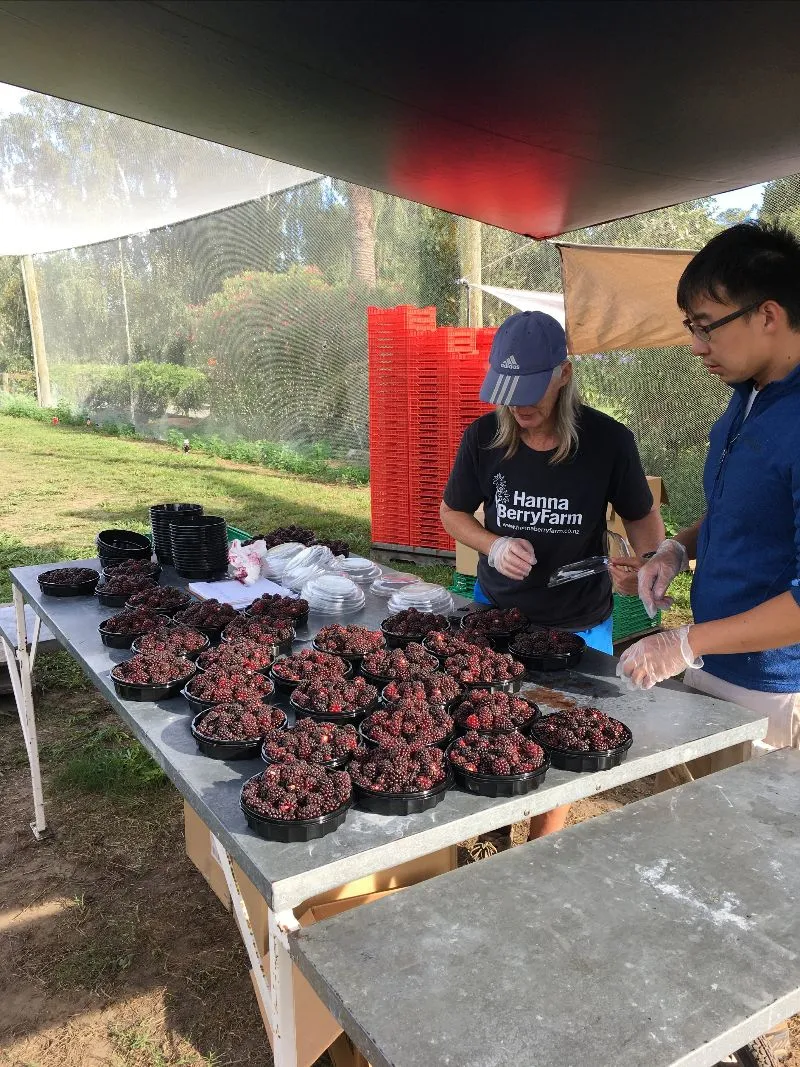
New Zealanders are incredibly knowledgeable about what is in season. Living in a first world country with a global economy and having access to any kind of food from any part of the world, we often forget that produce only grows at certain times of year and in certain places. If something is out of season, it’s either grown in some unnatural way or it’s shipped from afar (more food miles). Locals here know exactly what kind of fruit grew where and sought after specific ones (“Is this Pearl & Barley corn?”) that are most ripe at the right times - no more sour and watered down fruit!
Also, knowing where your food comes from specifically and learning about the farms that grow them tells you a lot more than the buzzwords in the labels. Many farmers we’ve talked to here engage in sustainable practices like rotational grazing pastures for cows and sheep. For some foods like wines or berries, if you don’t use certain fungicides, you won’t get a crop, so they’re automatically taken out of the running for qualifying as organic. Many farmers here go out of their way to avoid using too much pesticides / fungicides regardless, even though it makes their jobs harder. Meanwhile, there are farms in America that grow beef that technically qualifies as grass-fed, but they really did the minimum possible to get the label with cows being corn-fed for most its life.
Lesson 3: Business frameworks can be applied everywhere, even fruit stalls
Marketing
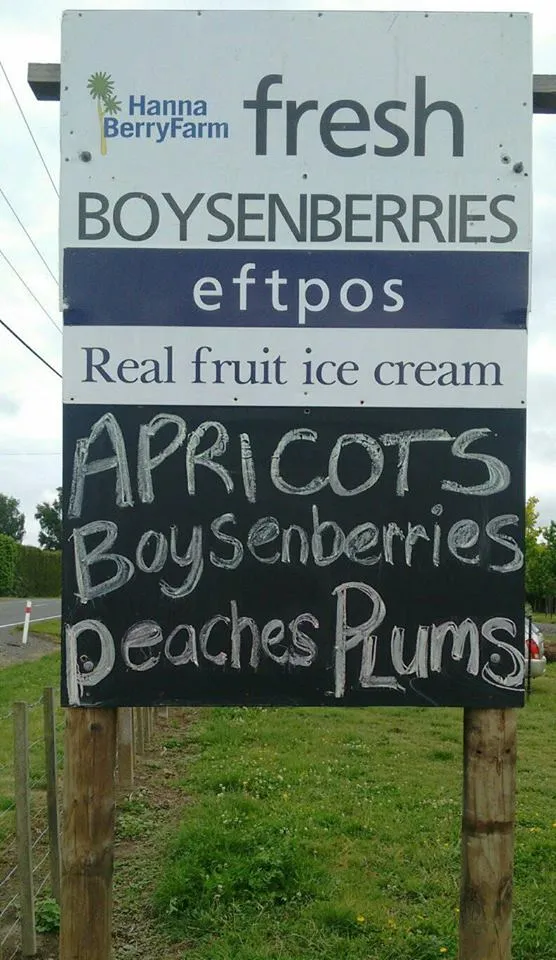
Have a marketing plan for each customer persona: Customers can be broken into two segments of those that are locals and those that are passerbys. Physical ads in the form of large signs are placed around town and at the roadside to attract visitors from out of town. As for locals, at the beginning of the business, the Hanna Berry participated in local farmers markets and sold jams and chutneys with their logo on it - building a local recurring customer base. Those actually take a lot of effort when done at a small scale, and made very low margins, so once the customer base was built, they stopped making them.
Product
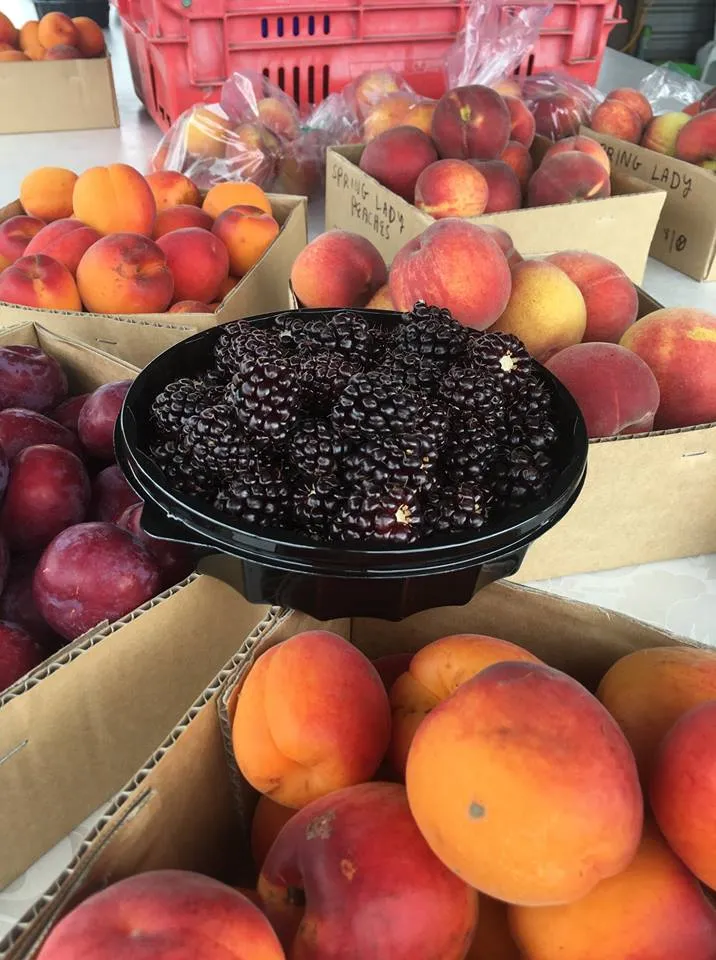
Have a Traffic Driving Product: The signs displayed boysenberries for sale, but also ice cream stand. On a hot day, visitors may not know that they want boysenberries but everyone wants ice cream! Locals often came for boysenberries but walked away with other fruits too.
Always be iterating product selection: The farm is always looking to bring in produce that are not available from local farms, such as corn from a farm an hour or two away. This ensures no competition with other farmers in the area! They also explore completely different product lines that can use their excess frozen berries. For a while they tried selling chutneys and pre-made jams.
Increase SKU count with groupings: Apart from different fruits, we sold different amounts (1kg, 2kg etc), and mixed boxes of fruits which catered to customer needs. This created 6 different products with only 2 types of fruit!
Put your best foot forward: Put the ripest fruit on top of the box! Make sure customers know your entire selection, including the frozen berries in the fridge.
Try before Purchase: Slice the ripest fruit into small pieces and offer customers to try!
Partnerships
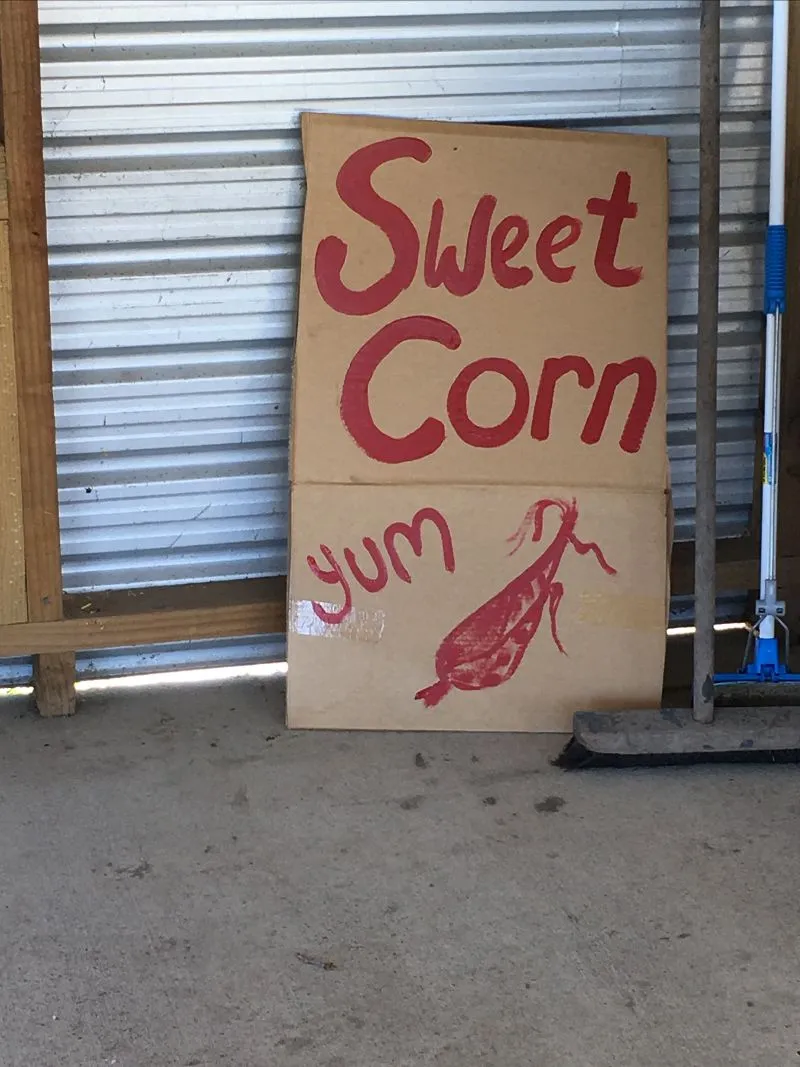
A network matters: Farmers talk to each other and find out what people are offering and at what prices. A good working relationship allowed Hanna Berry to get plums from a neighbor who doesn’t have a roadside stall. Instead of paying for the plums, they split the revenue 50/50. Hanna Berry was also able to get first access to 1000 sweet corns after hearing that that farm had a great harvest!
Customer Service
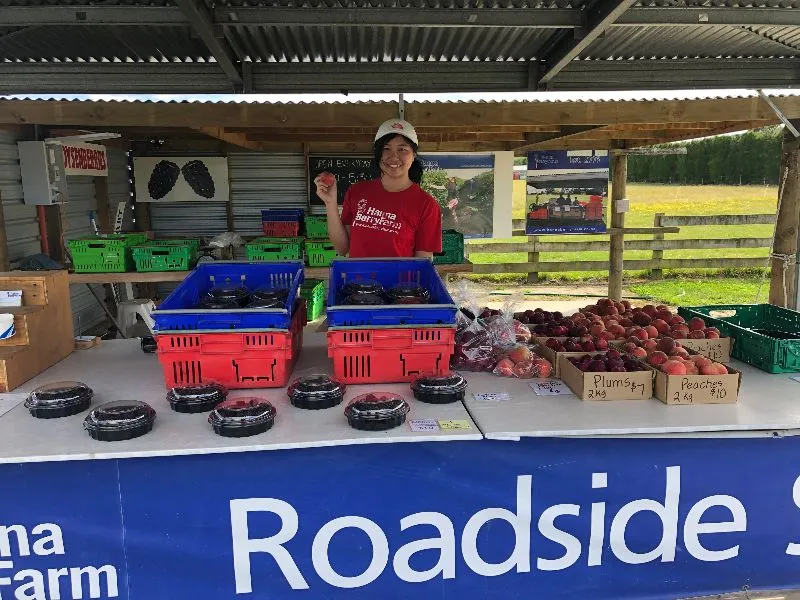
Build Long Term Relationships: Since it was a bad season, we would sell out of boysenberries every day before the closing time. This meant that customers who came later in the day would walk away disappointed, coming all the way here for naught. On the days that supply was really low (berries for sale were picked morning of - depending on weather, we would have more or less containers each day) we would restrict customers to only purchasing one container per car. The goal was never to sell out ASAP, close the stall and go to the beach, but to ensure that customers do not walk away disappointed. Even when we did sell out of boysenberries, an open stall means dependability and customers may want to buy other fruits that are still available.
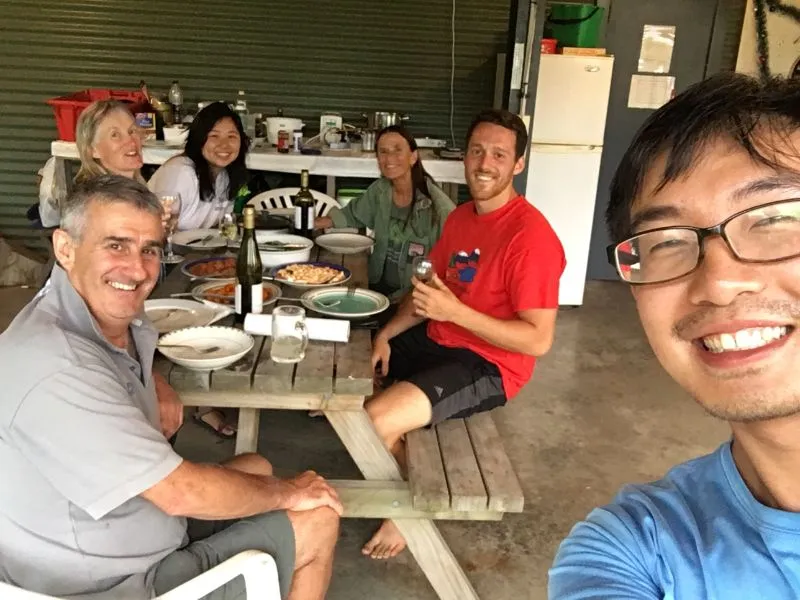
We came away from Hanna Berry Farm with a handful of learnings, several new friends (the other workawayers as well as our gracious hosts Shelley and Bruce) and a new appreciation for farm life. We also thoroughly enjoyed all the exploration we did of Hawkes Bay, which we originally didn’t even plan on stopping in. We are really grateful for the experience we had here and would recommend anyone planning on staying in New Zealand for an extended while to also pop by Hawke’s Bay!